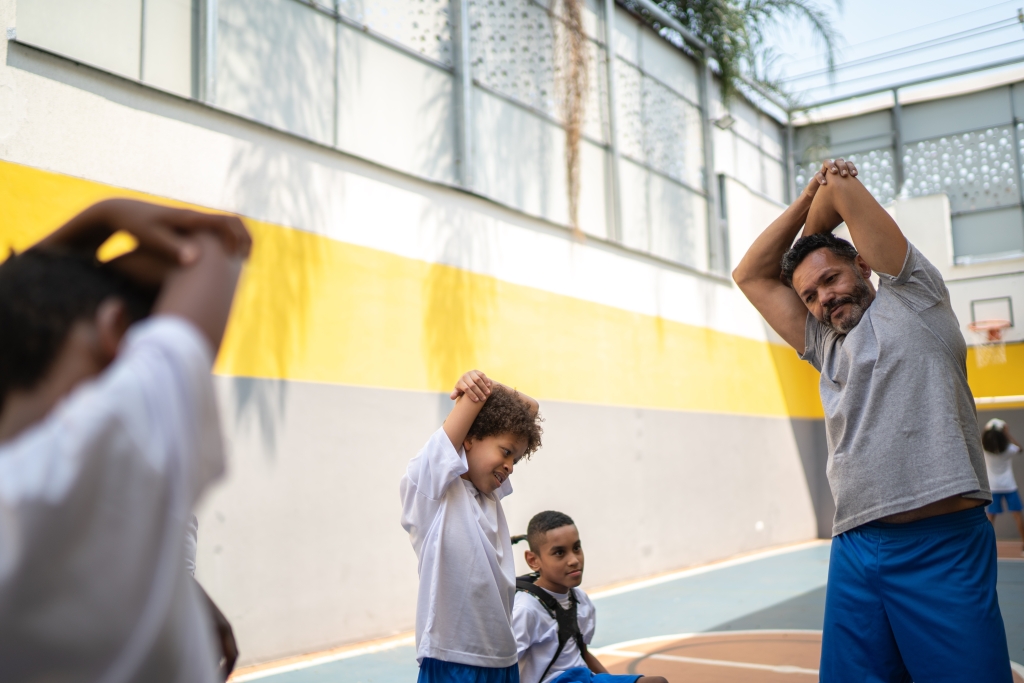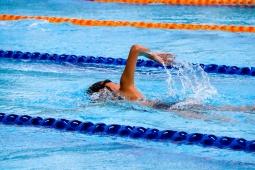D’un enseignant à l’autre : Questions et réponses des membres

Previously published in volume 81, Issue 3
Being a health and physical educator is rewarding. Your work has an impact on the lives of your colleagues, your students and their parents.
But it’s also a career with its challenges. We want our members to be able to connect and share how they handle the issues that come up in their classrooms and schools so we can all continue to learn and build our professional repertoires together.
This special section of the PHE Journal, called Teacher to Teacher, features questions posed by a teacher in conversation, through social media or by email, and answers directly from colleagues.
Question #1
In our high school physical education program, we have uniforms for students to wear to class. Sometimes, students do not show up in their school phys ed uniform, but still are able to actively participate in my class. I’ve been told you can’t assess students based on their uniform so why do I still see teachers assessing that way and taking marks away for not being in school-specific clothing?
Jennifer Gruno, Physical Education and English teacher (grades 9-12) at Edward Milne Community School, Sooke, B.C.: This is a difficult question as I am sure the majority of physical educators have either worked with colleagues who assess students on having proper PE clothing (whether school uniforms or ‘PE strip’), or they themselves currently assess this way, or have in the past. There are certainly traditional roots in this method of assessment; I’ve experienced PE teachers basing part of their assessment on PE clothing for as long as I can remember.
It is true that nowhere in my provincial curriculum does it mention a learning outcome regarding wearing proper clothing. Colleagues may argue that assessing PE clothes ties into learning outcomes concerning safety. I have also heard the argument that assessing students on wearing proper PE clothing is preparing them for activity in the real world (e.g. one would not wear jeans to play in a soccer match or attend a yoga lesson in a short dress). I understand both of these arguments, but once again, assessment must be tied to the curriculum.
I see this situation as similar to English, the other subject I teach, and assessing late work. As much as I would sometimes like to penalize late assignments with deducted marks, I cannot since that would be assessing the students’ ability to submit assignments on time rather than the quality and thought within his or her writing. Similarly, assessing students on the clothing they wear to PE is just that, rather than assessing them on their willingness to participate in a variety of physical activities or their ability to propose healthy choices that support lifelong health and wellbeing.
I appreciate you posing this question because it has made me (and my PE department) reflect on this issue. I would recommend meeting with your colleagues as well in order to discuss this topic.
Question #2
Bullying has become prevalent in my school. I witness it happen and hear about it from students. There are all sorts of bullying going on from verbal to physical. What bully-proofing strategies can I use in the classroom? Are their activities I can use as an intervention strategy?
Sophia Ali, Community Development Coordinator at Youville Centre in Winnipeg, says she uses an activity she found on U.S. Public Broadcaster PBS's website (http://to.pbs.org/1aRSD0F). The page suggests seven lesson plans and resources to help students understand the impact of bullying.
According to the article on the PBS site, the following "Crumpled Paper Exercise" is both simple and effective.
*First, students take a blank piece of paper and share words to describe it (such as blank, smooth, clean, neat).
*Then, ask students to crumple the paper up, step on it, roll it, do anything except rip it.
*Next, have students attempt to restore the paper to its original state, using any tools they can think of or find. When they're done, have the class share words to describe how the paper looks, now (such as dirty, damaged, messy).
*Ask students to offer the paper a sincere apology, telling it how sorry they are for what they've done to it.
Encourage students to think about, and then discuss, the parallels with bullying; how saying you're sorry doesn't erase the damage done.
For our next issue
We invite you to respond to the following question for our next edition of Teacher to Teacher. Your answer could be featured in the next issue of the PHE Journal.
Question: I have a student who just doesn’t want to participate. He gets along well with the other students, but in every phys ed class he just doesn’t seem motivated to take part. How do you motivate students who do not actively participate?
Send your response — or a question of your own — to journal@phecanada.ca.








